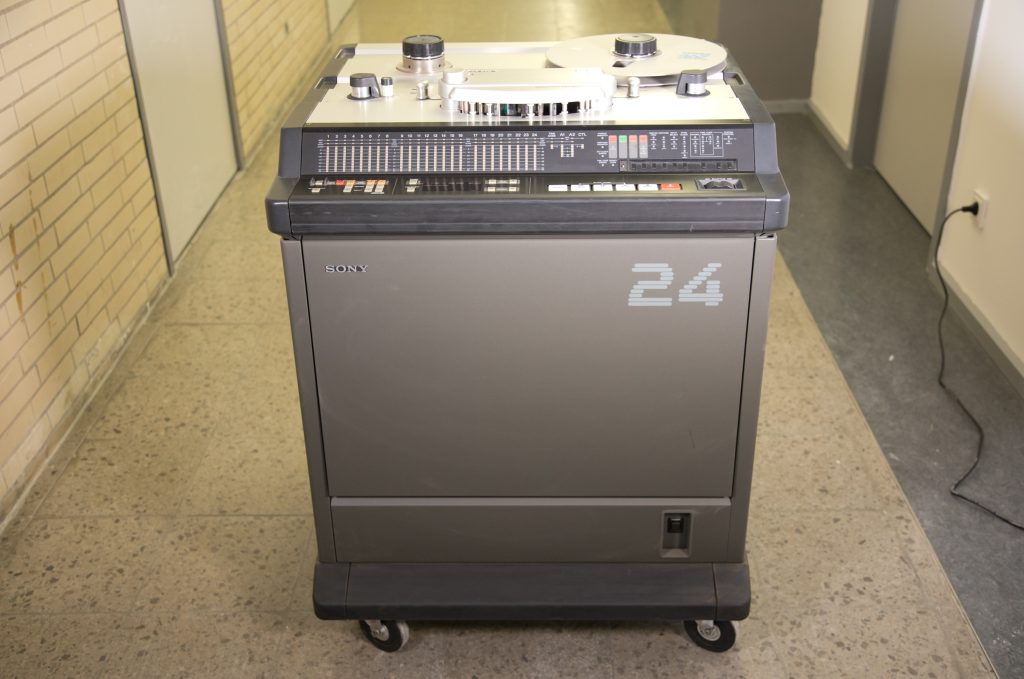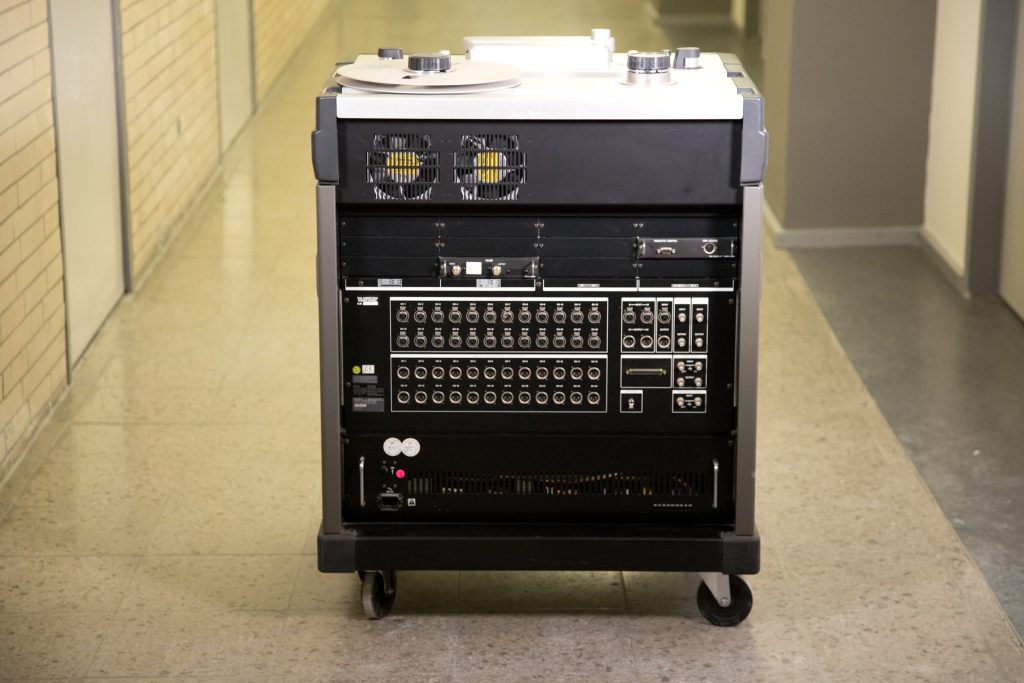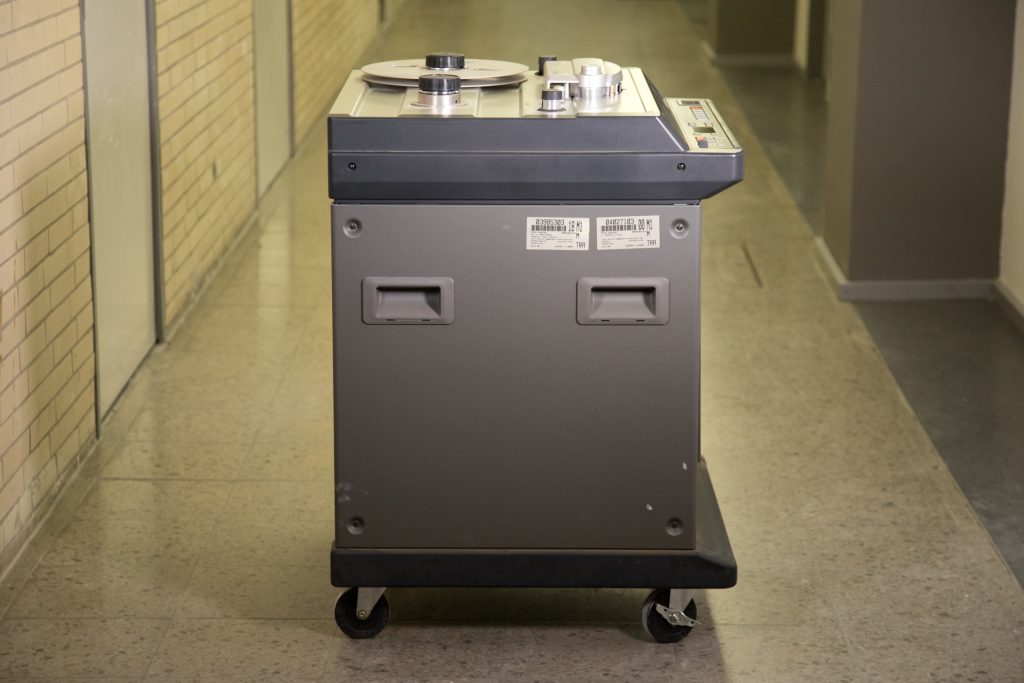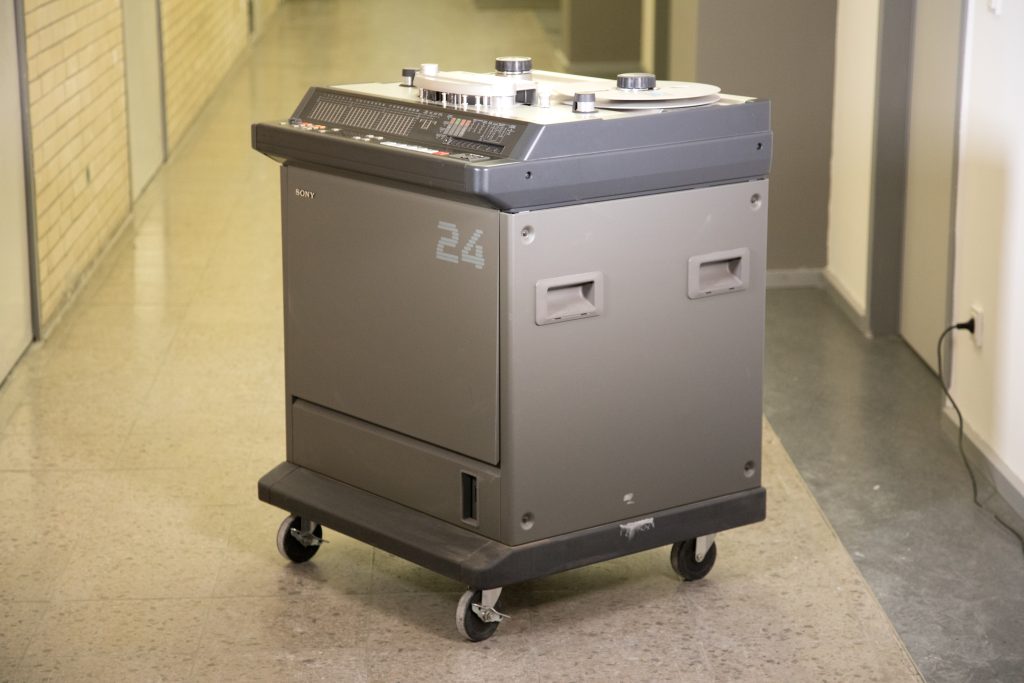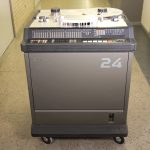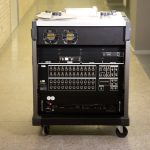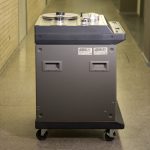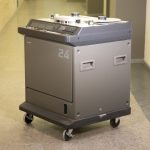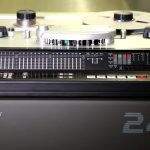Artefacts
Sony PCM 3324S digital 24-track tape recorder
PCM 3324S
Sony PCM 3324S digital 24-track tape recorder
PCM 3324S
These pictures show the multitrack reel-to-reel tape machine Sony PCM 3324S. It can store up to twenty-four channels of sound, facilitating the extensive editing and mixing that became typical of modern studio production with the advent of multitrack technology. Sound is stored in digital format, which means that exact copies of individual tracks can be produced without introducing additional background noise and distortion. By today’s standards, however, the resolution of the digitized signal (16 bit, 48 or 44.1 kHz) is considered low for studio recordings. This tape machine uses a standardized format for recording, Digital Audio Stationary Head or DASH, which was agreed upon by a group of manufacturers in order to make digital recordings interoperable across different studios. A special error-correction scheme in the device enables the physical cut-and-splice editing of tapes, a practice that came from analog technology and was an established tradition in studio work.
The video demonstrates the working sounds of the multitrack reel-to-reel tape machine Sony PCM 3324S. When the machine is turned on, the fan starts. Several seconds later, the buttons light up, indicating that the recorder is ready for use. Pressing the “Play” button starts the rotation of the reel, which stops automatically since no tape is inserted into the array of heads seen in the center of the machine’s top panel.
The recorder can store up to twenty-four channels of sound, facilitating the extensive editing and mixing that became typical of modern studio production with the advent of multitrack technology. The device stores sound in digital format, which means that exact copies of individual tracks can be produced without introducing additional background noise and distortion. By today’s standards, however, the resolution of the digitized signal (16 bit, 48 or 44.1 kHz) is considered low for studio recordings. This tape machine uses a standardized format for recording, Digital Audio Stationary Head or DASH, which was agreed upon by a group of manufacturers in order to make digital recordings interoperable across different studios. A special error-correction scheme in the device enables the physical cut-and-splice editing of tapes, a practice that came from analog technology and was an established tradition in studio work.
© 2015 – 2025 Humboldt-Universität zu Berlin

